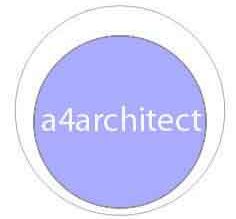Historic Cape Town Architecture
Author: Alter Sage
Cape Town’s old buildings tell a story of the city’s diverse cultural roots and the influences that have helped to make it one of the world’s most cosmopolitan destinations. They also reveal the superb design talents of three leading architects who, in the 18th and 19th centuries, came together in the Cape to transform the landscape of the inner city.
Today, the influences of these world-class draughtsmen, as well the architectural styles throughout the centuries, are strongly felt throughout the city centre and further afield. Dutch, French, Victorian, German Baroque and French neo-classicism are some of the most enduring styles still found throughout Cape Town, and many old buildings have been carefully maintained and restored to preserve the intricate designs.
Take a stroll through the heart of Cape Town, or travel into the scenic Cape Winelands, to discover the ornate architecture of the 18th and 19th centuries, and the influence of the Dutch, French and British settlers to the Cape.
The architects who shaped the Cape
Towards the end of the 18th century, three of the world’s top architects of the time were brought together in the Cape. Their designs not only became the definitive architecture of the Cape, but are mostly still in existence today, more than 200 years later.
Anton Anreith, a German-born sculptor and woodcarver, was sent to the Cape as a solider in the Company’s service in 1777. A few years later, Parisian architect Louis Michel Thibault arrived in the land, serving as an officer in the French garrison. Anreith is widely credited with introducing the German Rococo style to the Cape, while Thibault, an architect in the neo-classic style of the French, was highly regarded as a leading draughtsman in South Africa. In 1790, German architect Hermann Schutte arrived at the Cape, and together, the three young and highly talented men set about designing and constructing the rich architecture of this prosperous era.
Anreith’s Lutheran Church and Kat Balcony
Anreith, initially employed as a carpenter, quickly gained favour as a talented designer, and in 1786 became the master sculptor of the Dutch East India Company (VOC). He also earned the commission to reconstruct the facade of the Lutheran Church, located in Strand Street, and many believe him to be responsible for sculpting the famous Kat balcony at the Castle of Good Hope. It was here that declarations were made, official visitors were welcomed, and judicial sentences were read. Today, it leads to the renowned William Fehr collection housed in the Castle.
Thibault’s public buildings and iconic Groot Constantia
Thibault, too, enjoyed an illustrious career in the Cape, and his name is associated with many of the city’s most famous landmarks. As the VOC’s chief military engineer, he was responsible for crafting the majority of the city’s public buildings, including the Good Hope Masonic Lodge, the present-day Slave Lodge facade, and the iconic gables at Groot Constantia. He also designed the homestead and wine cellar of this famous Cape Dutch wine estate, as well as the several other buildings, manors and facades in and around the Cape.
Schutte’s Groote Kerk and Green Point Lighthouse
Schutte joined the VOC as a stonemason, but was discharged after losing an eye and a hand in a blasting accident on Robben Island. This led to a lucrative career as a private building contractor, in which he was awarded many commissions by Thibault. Schutte designed South Africa’s oldest church, Groote Kerk, located in Adderley Street, and is also widely credited with crafting the Green Point Lighthouse, the first lighthouse erected on South African shores, and still a major attraction today.
Other historical Cape Town architecture
Many other heritage buildings in and around the Cape reveal the diverse influences of the past 300 years – in particular, the classic Cape Dutch and Victorian styles which remain a feature of modern architecture. The Cape Winelands region of the province still reflects a powerful Dutch and French Huguenot influence, both in its architecture and in its broader cultural experience. In fact, the Cape’s distinctive architecture is rooted in this lush wine-farming part of the land.
Explore Cape Town’s heritage buildings, and discover the story of the city as told by its magnificent architecture and design.
Article Source: http://www.articlesbase.com/history-articles/historic-cape-town-architecture-2195850.html
About the Author
The Taj is a 5-star hotel in Cape Town, housed in two heritage buildings of the city centre. These beautiful old buildings, pristinely restored, are the ideal location for one of Cape Town’s most luxurious hotels. Explore the opulent suites at Taj Cape Town now.


Leave a Reply